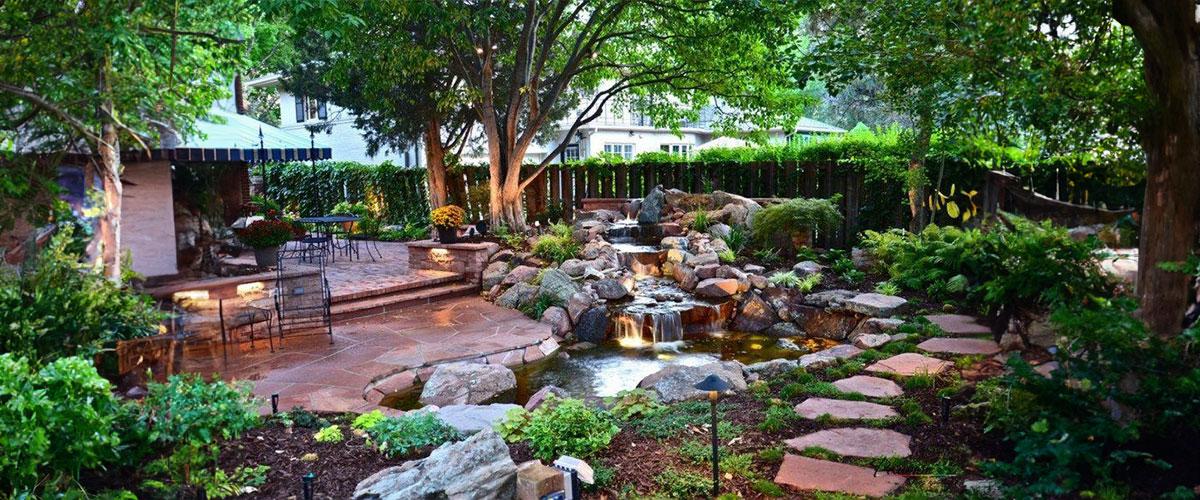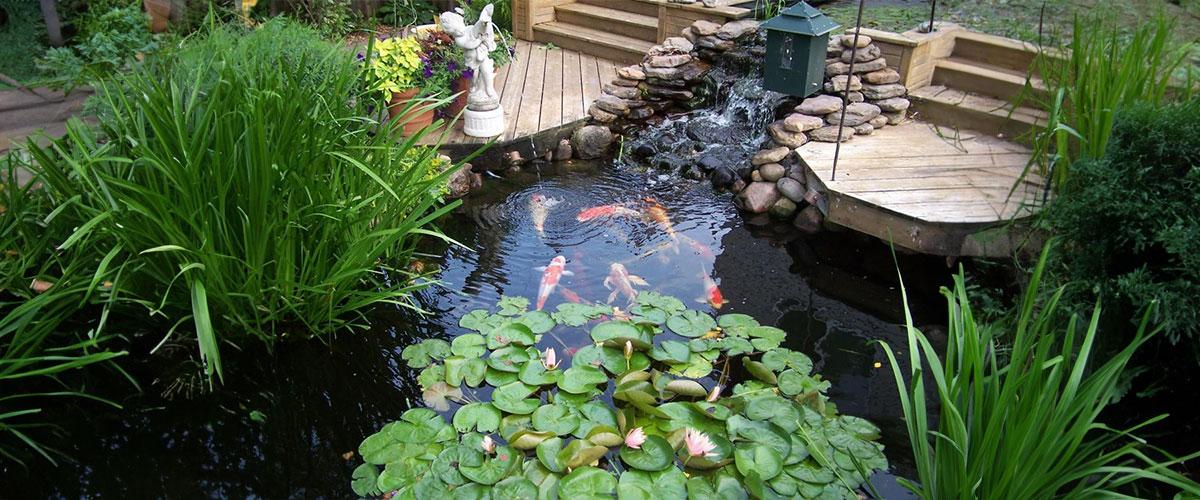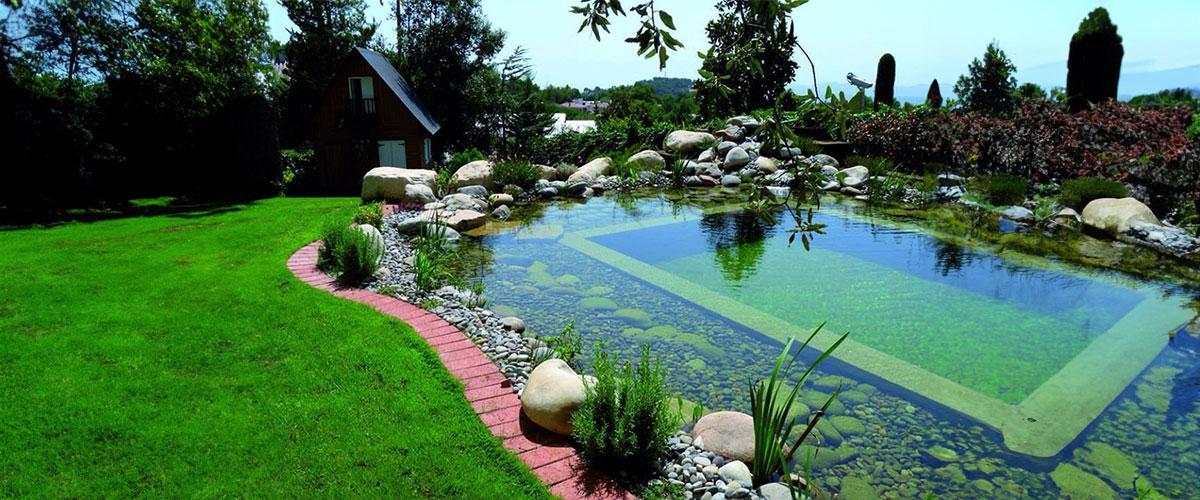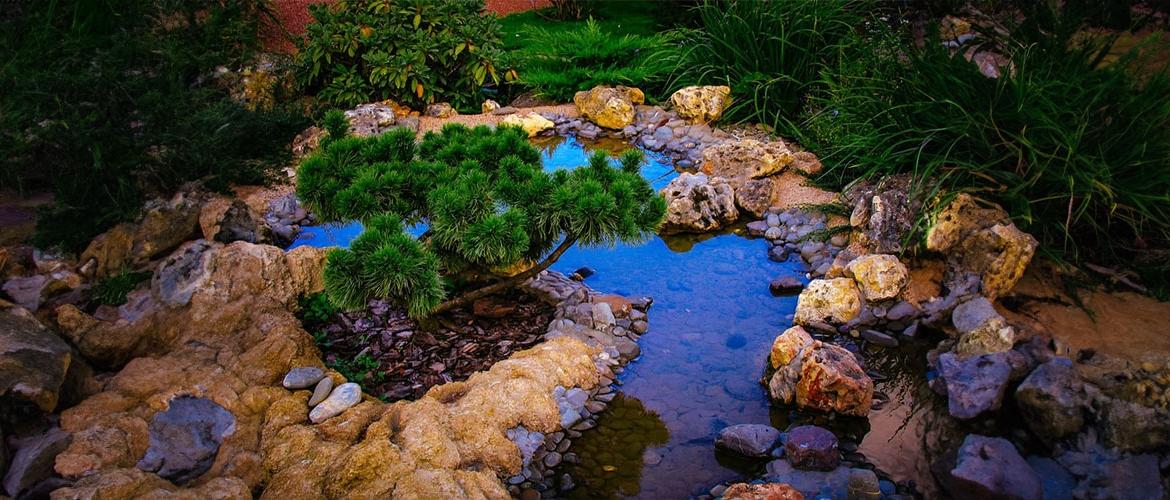(Podcast Episode)
How To Build A Pond: A Step By Step Expert Guide
Imagine entering your backyard and being greeted by the gentle sound of water trickling, vibrant aquatic plants swaying in the breeze, and colorful fish gracefully gliding through crystal-clear waters.
A well-designed and meticulously crafted pond can transform any outdoor space into a serene sanctuary, providing a captivating focal point that evokes a sense of tranquility and natural beauty.
Whether you’re an avid gardener or simply seeking a peaceful retreat, building a pond is a rewarding and fulfilling endeavor that allows you to connect with nature and create a harmonious ecosystem.
This comprehensive expert guide will walk you through the step-by-step process of constructing your pond, ensuring that every aspect is carefully considered and executed, resulting in a stunning aquatic haven that will delight you and your visitors.
Planning and Design
Before you start digging, take the time to plan and design your pond. Consider the size, location, and shape that will complement your backyard. Decide whether you want a dedicated koi pond or a general water feature. Research different pond styles, browse magazines or online resources, and draw inspiration from existing ponds. It is your chance to unleash your creativity and envision the pond of your dreams.

Gathering the Right Tools and Materials
To build a pond, you’ll need specific tools and materials. Here’s a handy checklist:
-
- Shovel or excavator for digging
- Pond liner or preformed pond shell
- Underlayment to protect the liner
- Rocks, gravel, or decorative elements
- Pond pump and filter system
- Pond plants
- Fish (if building a koi pond)
- Water testing kit
- Pond maintenance equipment
Preparing the Site
Choose the ideal location for your pond. Ensure it’s away from trees to prevent debris from falling into the water and causing maintenance issues. Mark your pond’s desired shape and size using stakes and a string. Remove any grass or vegetation from the area. Excavate the pond area, removing the soil carefully to create the desired depth. Remember to include shelves or ledges for plants.
Installing the Pond Liner
If you’re using a flexible pond liner, install it carefully to prevent any punctures or tears. Start by laying down an underlayment to protect the liner from sharp rocks or roots. Gently drape the liner over the excavated area, ensuring it covers all edges and contours. Smooth out any wrinkles or folds. Trim excess liner but leave some extra around the edges for securing later. It is always recommended to use professionals consultation when you want to build a pond.
Adding Rocks and Decorative Elements
Now it’s time to add personality to your pond. Place rocks and boulders strategically around the perimeter, ensuring they blend naturally with the landscape. Create varying heights and depths for a visually appealing result. Use gravel or small stones to cover the exposed liner, giving it a more natural look. Introduce additional decorative elements such as waterfalls, fountains, or statues to enhance the overall aesthetic.

Installing the Pond Equipment
A pond pump and filter system are essential for water quality and circulation. Observe the manufacturer’s installation instructions while installing the pump and filter. Position them in a discreet location, ensuring easy access for maintenance. Connect the necessary tubing and wiring, concealing them as much as possible. Test the system to ensure everything is functioning correctly.
Adding Aquatic Plants and Fish
Aquatic plants play a vital role in pond ecosystems, providing oxygen, shade, and natural filtration. Select various plants, including submerged, floating, and marginal species, to create a balanced ecosystem. If you’re building a koi pond, carefully introduce the fish once the water is balanced correctly and the pond has matured. Monitor the water quality regularly using a testing kit and adjust as necessary.
Maintenance and Care
Maintaining your pond is essential for its longevity and health. Regularly remove debris, leaves, and algae from the surface and bottom of the pond. Trim and prune plants to maintain their growth and prevent overgrowth. Check and clean the filter system periodically, replacing any worn-out parts. Monitor the water quality, pH levels, and temperature to ensure a suitable environment for aquatic life.

Water Treatment and Balance
Maintaining a healthy water balance is crucial for the well-being of your pond’s ecosystem. Regularly test the water for pH, ammonia, nitrite, and nitrate levels. Adjust as necessary using water treatments or additives. Establishing a beneficial bacteria colony in your pond is essential for natural filtration. Consider using beneficial bacteria products to jumpstart this process.
Lighting and Ambiance
Enhance the beauty of your pond by incorporating lighting features. Underwater LED lights can illuminate the water, showcasing your aquatic plants and fish during the evening hours. Additionally, consider adding landscape lighting around the pond to create a warm, inviting atmosphere for nighttime enjoyment.
Safety Measures
If you have young children or pets, it’s essential to incorporate safety measures into your pond design. Install a sturdy pond cover or netting to prevent accidental falls or access by small animals. Ensure the edges of the pond are secure and not prone to collapse. Educating family members or visitors about pond safety guidelines is also good.
FAQs
How much space do I need to build a pond?
The space required to build a pond depends on your desired size and design. A space of around 100 to 200 square feet is sufficient for a small backyard pond. Larger ponds may require several hundred or even thousands of square feet. It’s essential to consider factors such as available land, sunlight exposure, and local regulations before determining the size of your pond.
Do I need to have a filtration system for my pond?
A filtration system is perfect for a healthy and balanced pond ecosystem. A filtration system helps remove debris, excess nutrients, and harmful substances, ensuring good water quality. It encourages the development of advantageous microorganisms and inhibits algae growth, keeping the pond clear and maintaining a suitable habitat for fish and other aquatic life. Be sure to choose a filtration system appropriate for your pond’s size and follow the manufacturer’s instructions for installation and maintenance.
How can I find a professional pond installation near me?
Now that you have made up your mind to build a pond. To find a professional pond installer near your location, you can use various resources. Start by conducting an online search for “pond installation services” or ” pond installation company near me” in your area. Look for local landscaping companies or specialized pond builders who offer installation services. Additionally, you can ask for recommendations from friends, neighbors, or gardening enthusiasts who have previously had ponds installed. Don’t forget to read reviews and check their portfolios to ensure they have the necessary expertise and experience in pond installation.
Final Words
As you put the finishing touches on building your pond, adding the final plants, and watching the fish gracefully explore their new home, you’ll find yourself in awe of the beauty you’ve created.
The journey from the initial planning and design to the final installation has been one of patience, creativity, and a deep appreciation for the wonders of nature. Your pond is now a living testament to your dedication and love for the natural world, providing a tranquil escape from the demands of everyday life.
Sitting by the water’s edge, listening to the melodic symphony of nature, and watching the sun’s golden rays dance upon the water’s surface, you’ll know that building a pond was one of the most rewarding decisions you’ve ever made. Cherish this haven, care for it diligently, and let its beauty inspire for years.

